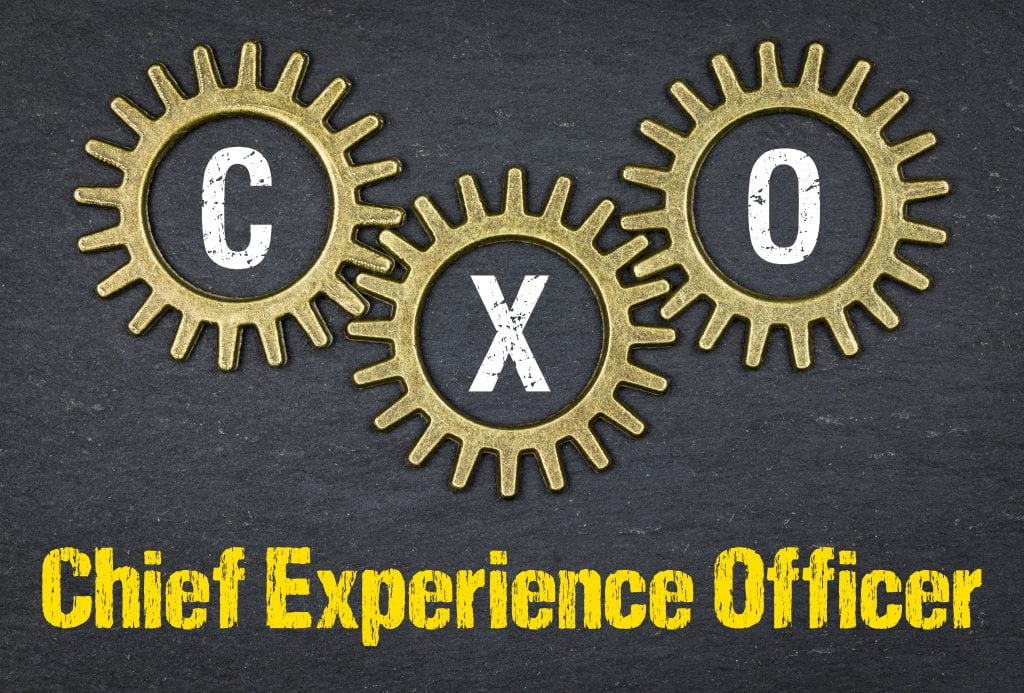
Let’s address the first part of the question. What is a Chief Experience Officer, or CXO?
Table of Contents
ToggleFirstly, some disambiguation between CxO and CXO. I know. Confusing isn’t it? CxO has been taken to mean any Chief-level employee in a company, with Chief Executive Officer (CEO) at the top and others like Chief Financial Officer (CFO) and Chief Information Officer (CIO) supporting them. We’ve seen more and more CxO jobs in recent years. We now have Chief Marketing Officer, Chief Operations Officer, Chief Revenue Officer, and many more.
What we want to address here is the role of CXO with a capital “X.” This version of the acronym stands for “Chief customer eXperience Officer.” And the appearance of the role is significant and certainly worth exploring.
What Does a CXO Do?
There is a range of descriptions of a CXO’s role – just Google it, and you’ll find quite some diversity. but at heart, the job has to be about creating, monitoring, and improving the experience of a supplier’s customers and making their interactions as easy and as enjoyable as possible. That responsibility embraces the design of systems and technology interfaces, seeking and acting on customers’ views and opinions, and shaping the customers’ expectations.
It isn’t just about making more money. Some of the most dramatic improvements in customer experience (CX) have come within government organizations. The UK’s tax office, Her Majesty’s Revenue and Customs (HMRC), has an entirely fixed and captive audience: everyone has to pay tax. But the HMRC executive board includes a ‘Director General, Customer Services Wellbeing Champion,’ which also serves to demonstrate that you don’t have to have “CXO” on your door to be a CXO. And submitting a tax return to the HMRC has become a very simple and easy-to-perform task.
Is this really something new?
By creating this new role, are companies saying this is a new idea, and the customer experience didn’t matter before? That’s unlikely. Caring about your customers is as old a concern as business – and that’s very old indeed. Staff in supply companies have – of course – been doing their best to improve the customer experience. Happy customers stick with you, keep buying, and tell their friends and colleagues about their good experiences.
Even more often, unhappy customers tell people about their bad experiences. So having everyone working on improving customer experience has been a trait of good and successful companies for centuries. Especially given the explosion of online shopping and opinion sites that feature customer reviews.
Customer experience has been a key focus for sales and marketing, support, and design people, amongst others. But having everyone concerned inevitably means a lack of coordination. Appointing a senior person to take overall responsibility is a powerful tool to help build coordination and consistency.
A CXO can help ensure that feedback from customers informs design initiatives and reforms, to reinforce success and avoid repeated failures. A CXO can also help the company learn from the sales teams what customers don’t understand, and make sure that information is shared with Marketing. This kind of coordination and communication should always happen. But with senior responsibility behind it, the chances are improved greatly.
So, yes, creating a high-profile role dedicated to customer experience oversight with some enforcement powers is something new. And no, it also isn’t new. The skills and the need have always been around. For some companies, it has all been working without the need for dedicated job titles. But with the title comes a significant deliverable that was not common before: an organization’s customer experience strategy. Having a formally documented strategy for CX is a likely a tangible benefit from formalizing the role.
Tools to help the CXO
The scope of the CXO’s responsibility is the whole range of customer touch-points, wherever and whenever there is interaction between supplier and customer. This ranges from initial awareness through to post-sales support. Therefore, the CXO should be focused on ensuring there are adequate tools to supply information and facilitate deliverables across that spectrum. But much of the CXO’s everyday focus will be on the output of CXO analytics tools – capturing, interpreting, and acting upon data collected.
The nature of 21st-century business means that data is plentiful. Every single customer interaction can be captured and replayed, analyzed to seek improvement and incorporated into dashboards and reports. Making use of that vast array of data and turning into meaningful information to support CX initiatives is a key CXO task.
Are customers the only ones with experience?
We’ve worked so far with the currently accepted definition of CXO as being concerned with CX. Of course, that is vital to a supply company’s survival. But there are grounds for seeing the role as slightly wider and being the Chief Experience Officer. Research – and good old-fashioned business common sense – tell us that happy staff perform better than those who see their job as necessarily evil in their lives.
Billionaire and serial entrepreneur Sir Richard Branson said, “Clients do not come first. Employees come first. If you take care of your employees, they will take care of the clients”. Companies that put this into practice realize that all experiences touched on by their organization matter. And that being so, the skills and knowledge of the CXO can usefully be applied to internal experiences as well as those of the customer.
Summary
It might be tempting to see the CXO role as just one more of the eccentric Chief-level roles appearing in some companies. However, creating a single point of authority for all customer experiences does have real value for many organizations.





